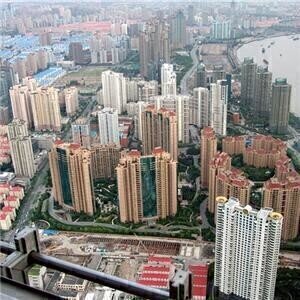Business News
Hidden Motives: China, Taiwan and Semiconductors
Dec 14 2021
In recent days, two seemingly disconnected stories have been making headlines worldwide. The first is exactly the sort of thing that starts journalists of all stripes salivating – rumblings of armed conflict between China and Taiwan (and perhaps, their respective allies, as well). By contrast, the second story appears trivial and boring. But if you look closely, the recent coverage of the global semiconductor industry’s Q3 sales figure might just reveal an aspect of the developing situation in the South China Sea.
Twin Spirits
In the Spring of 2015, on the eve of the Thirteenth Five-Year Plan, the Central People’s Government of China set out a set of industrial policies, known as Made in China 2025. A bid to diminish dependency on imports, the state aims at developing China’s manufacturing capabilities in a number of previously-unexplored sectors. The crown jewel, however, is semiconductor manufacturing, for it is a technology that is not only in exceedingly high demand but innovation in this area promises to compound innovation elsewhere.
By the Winter of 2019, when 3,000 Taiwanese engineers had migrated to the mainland to be a part of Made in China 2025, the Chinese state had long since begun instructing exporters to refer to Taiwan as a Chinese province lest their contracts be terminated. Since those months, Taiwan-China relations have gradually soured, becoming intertwined with the souring of America-China relations. Now, as 2021 winds to a close, the world’s biggest contract chipmaker, Taiwan Semiconductor Manufacturing Co., accounting for almost a quarter of global semiconductor output, posts record-high billings just as, almost simultaneously, an editorial by the Chinese Communist Party’s international politics broadsheet, the Global Times, urges the United States to withdraw its long-standing support for Taiwanese autonomy, to ‘think about what bargaining chips you do have in your hands to intimidate the Chinese mainland which is determined to achieve national reunification’.
The New Gold Rush
Clearly, then, there are links between China’s industrial aims and its disputing of Taiwan’s independence. But China is far from the only nation-state that’s become doggedly obsessed with semiconductor supremacy.
Recently, Khaldoon Al Mubarak, CEO of the United Arab Emirates’ sovereign wealth fund Mubadala, appeared on CNBC to discuss the organisation’s long-term investment strategy for semiconductor manufacturing in the region. Similarly, Germany has been eagerly courting TSMC in the hope that the Taiwanese firm will consider opening a plant on German turf. From Arizona to Kumamoto, foundries are sprouting all over the world in a scramble to deal with the global semiconductor shortage.
Of course, firms are not just after quantity. They want to make the highest-quality chips, too. Doing so requires analytical chemistry – and analytical chemists. As such, it’s worth bearing in mind that effective and convenient detection of wafer contamination might just become as valuable in this new 21st-century Gold Rush as silicon itself.
For more updates and information about environmental monitoring in the semiconductor industry, make sure to stay tuned to Envirotech Online.
Digital Edition
AET 28.3 September 2024
September 2024
Business News - ENVEA announces acquisition of APAQ Group - SICK and Endress+Hauser sign strategic partnership - Efforts to curb gas flaring intensify amid environmental concerns Air Monito...
View all digital editions
Events
WEATHER • CLIMATE • WATER / EARTH OBSERVATIONS / GREEN ECONOMY
Oct 29 2024 St. Petersburg, Russia
Oct 30 2024 Hong Kong
Nov 05 2024 Toronto, Canada
Nov 05 2024 Rimini, Italy
Nov 06 2024 Ho Chi Minh City, Vietnam



















